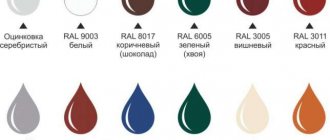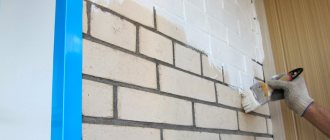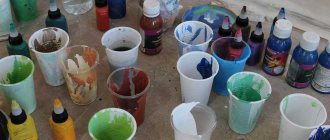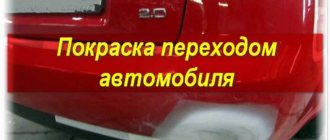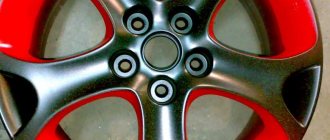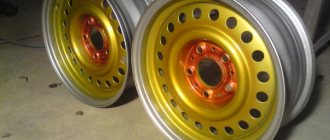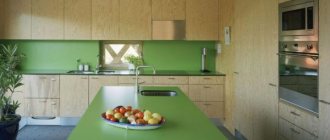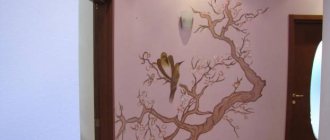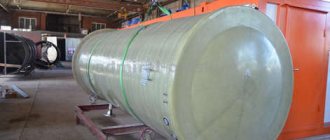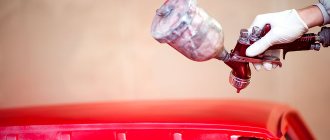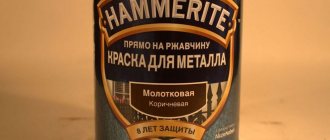Many car enthusiasts have noticed cars that, regardless of the weather, retain their shine and have a playful color. The material is called “xeralic”, it has many features for the owner. Painting with Xerallic is not cheap, therefore, the owner has to think several times about his behavior on the road and avoid unnecessary risks. The material is extremely sensitive, even with minor scratches you have to repaint the entire car. When choosing Xeralik car paint, you need to take into account not only the cost of painting, but also subsequent care. All shortcomings are fully compensated by the appearance.
How did Xeralik appear?
The name "Xirallic" is applied to a number of pigment paints. However, the origins of this word lie in Japan, where a specific product was patented by Merck KGaA. Xirallic is still produced by the Japanese company Onahama. However, to date, other companies have received licenses for their products. Usually this name is applied to paints that have three layers and give a shiny and silky effect when painted.
According to the manufacturers, Xirallic is an alternative material to white mother-of-pearl, which is also often used for paint and varnish coatings, but the difference is in the technology and materials used in the manufacture of the pigment.
Many motorists dream of this shiny paint, which will make it impossible not to notice their car on the road. However, you will have to pay a considerable price for the beauty of the car. This forces you to take more careful care of your vehicle, protecting it from scratches and dents. Only one damage will cause the entire part to be repainted. This necessitates the need to plan for further operation of the machine if necessary.
Metallic painting technology
A competent technology for painting a metallic car involves applying a coating in three layers. Its total thickness should not be more than 70-120 microns.
The most convenient way to apply the dye is by spraying. Protect parts that will not be processed with tape, paper, and in some places you can use adhesive tape.
It is acceptable to coat non-painted areas of the car with an aqueous composition based on chalk, glycerin and dextrin. After finishing work, it can be easily removed with ordinary water. Dilute the dye and stir it to the desired viscosity. For primary staining, it should be 26 s. For subsequent layers, paint needs to be more liquid.
For 6 kg of coating, 4 kg of primer is required. Please note that 20% of the working mass of paint should be solvent. For each of the materials used: primer, putty and dye, use different spray bottles or guns. This is necessary because the viscosity level of the compositions is different. If the diameter of the nozzle is chosen incorrectly, the liquid materials will not be sprayed as they should be, but will splash in all directions, leaving an uneven and sloppy layer of the substance on the surface of the car.
Select a gun for painting a car based on the diameter of its nozzle. When the viscosity of the material is 18-22 seconds, then you should choose a gun that has a nozzle of 1.3-1.4 mm. If the viscosity is 30-35 seconds, then the nozzle cross-section should be no more than 1.8 mm.
It is worth noting that a good spray gun allows you to control the configuration of the torch, as well as the pressure of the air flow and the amount of liquid. Therefore, having only one gun, you will have the opportunity to paint the windshield pillars with a round torch, and a wide torch - the hood of the car. In this case, the composition costs will be optimal, and the fog will be small.
Preparation and tools
No differences in the design of the spray gun and nozzle are required; medium or fine grain of standard equipment is sufficient. Coarse-grained equipment is suitable for airbrushing, otherwise the spray bottle may become clogged (rarely happens).
A specially prepared room is required; increased lighting requirements are associated with the high cost of the pigment (25 g - 1-2 thousand rubles). For complete painting using the additive, you will have to pay from 20 to 30 thousand rubles. For this reason, only partial painting with glitter is often used. When painting individual elements of the body, you need to prepare masking tape. To improve the quality of the coating, you should purchase materials from one manufacturer. It is beneficial and convenient to have an orbital machine.
Read also: Beeline beeps what is it
Varnishing is the last stage of work
The technology of metallic car painting is such that it is extremely undesirable to overdry the dye before varnishing the surfaces. It is not recommended to leave an already painted car without applying varnish overnight. This is explained by the fact that overdried enamel will have poor adhesion to the varnish.
Before the application process, the varnish must be diluted with a fixative and solvent. Dilution proportions are indicated in the instructions by each manufacturer. Experienced car painters, during the initial varnishing, usually make the composition weaker than in subsequent stages.
It is not at all difficult to remove small shagreen by sanding and subsequent polishing, but removing varnish stains is much more difficult. Sometimes this requires removing an entire layer of varnish and applying it again.
For one reason or another, the number of cars painted with metallic paints is growing, but for some reason they suffer in accidents just like the rest. Repair painting of such cars places serious demands on the painter’s qualifications. The main reason is that, whatever one may say, the metal particles contained in these paints are still insoluble foreign bodies, which in a layer of paint can behave absolutely unpredictably and capriciously.
Therefore, to successfully work with metallic enamels, the painter must not only practice applying paint, but also study theory - understand the most important properties of “metallics” and the principles of “behavior” of these paints.
Today you will find out
Adviсe
- If during the application of the base paint (metallic) any defect occurs (dust or water dripped from the spray gun), then you need to let the applied paint dry for 30–60 minutes (at a temperature of 20 degrees Celsius). Next, carefully sand the defect with P800 sanding paper and water, clean and degrease the surface.
- Stains can form when metallic paint is not applied evenly. This happens when you change the direction of movement of the spray gun at the end of the passage, or when you linger a little while moving the spray gun. At this moment the paint lays down in a thicker layer and it looks like a stain. For this reason, it is important to release the trigger of the paint gun in time to avoid stains at the end of the pass.
- At the end of the panel, do not release the trigger completely until the paint stops spraying, but air continues to escape. This will prevent a sharp, uneven release of paint after the next pull of the trigger.
Share “How to paint metallic?”
The procedure for painting a car at a service station is quite expensive, especially if it is a fashionable metallic paint. Therefore, many car owners decide to do all the work themselves. Of course, the technology of metallic painting at home is somewhat different from professional one. But nevertheless, this task is quite feasible.
Bottom line
Painting with Xeralic gives the effect of a stylish and impressive car that stands out clearly in the crowd. The owner can be proud of his fashionable and stylish car, provided that the rules and technology for applying such a coating are followed. Coverage is not available to everyone due to its high cost and requires careful handling. Be sure to write down the mixing formula for the components in case you need to repaint any element of the body.
0
Author of the publication
offline for 3 weeks
Advantages and disadvantages of painting a car with Xerallic
Painting a car with Xerallic is an original and modern way to make a car stand out on the road, giving an elegant design and color to the car. Unfortunately, the positive side leads to several inconveniences that you will have to get acquainted with during operation:
- high cost for additives and pigment particles. Due to the significant amount of investment, you have to be especially careful: reduce your driving speed and be extra careful when parking. Additionally, the pigment leads to a special distrust of other participants in the movement;
- the smallest scratch provokes the need to completely repaint the body element, therefore, costs arise again;
- when using Xeralik, you will have to pay 30 thousand rubles for a complete painting.
Painting a car with Xerallic is an original and modern way to make a car stand out on the road.
Should I use a spray bottle or a can?
Painting a car with liquid rubber
You can properly paint your car using a variety of equipment. Naturally, if you strive for high-quality and reliable painting of the entire car, then it is best to use a spray gun, also called a spray gun, and naturally a powerful compressor.
If you need to paint certain parts of the car that are easy to remove - rear view mirrors, wheels, moldings, spoilers, then you can use a spray can. However, it is worth knowing that it is best to choose a well-known brand that is resistant to weather conditions. Otherwise, if it turns out to be cheap enamel, it will peel off in a couple of months.
Of course, proper painting of a car can also be done with a spray can, but there are no guarantees that the quality will be at the same level. Because enamels are constantly updated and improved.
The main advantages of Xeralic compared to mother-of-pearl
If you choose Xeralic, then:
– the color saturation of the substrate paint is preserved. In this case, the latter is not distorted;
– in the presence of high-quality lighting, the treated surface will shine and shimmer, and in poor lighting, the effect of a silky film is created. This provides a beautiful look to the car and gives it individuality;
– the overflow effect will be enhanced due to the fact that Xeralik provides overflow in four planes. For comparison, mother-of-pearl uses two planes, while metallic uses only one.
Smooth transition when painting with metallic
Standard transition. 1,2,3 - sequentially applied layers of paint, overlapping each other by 10 cm. The first layer is applied to the repair area.
- Some colors will differ from the original color even if the paint is chosen correctly. Painting with a smooth transition is important so that the repair is not noticeable. Achieving a smooth transition from new to old paint, where it is difficult or impossible to determine, distinguishes a professional from a beginner.
- The standard and most commonly used method involves applying the first layer slightly behind the repair area (10-15 cm), the second - further than the first layer, and the third layer - even further.
- One of the limitations of the conventional fade painting method is that each new coat of paint is applied to a dry surface. Thus, metal particles may not adhere correctly, and these imperfections will be noticeable after varnishing.
Reverse transition. Layers of paint are applied starting from the area farthest from the repair area.
- The reverse transition technique is used if the paint has a complex color or the arrangement of metallic particles is important. Using this method, the painter applies the first coat to the furthest area first, then applies a coat closer to the repair area, and so on. Due to the fact that each layer is applied on top of the previous wet layer, the metallic particles in the new layer will fall as they should.
- You can also use a transparent base (diluted binder) as the first layer. This layer was written above. First, diluted binder is applied to the panel. Next, paint is applied using the standard or reverse transition method.
- At the end of each pass, you need to gradually release the spray gun trigger. You can read more about the smooth transition method in the article “how to paint without differences in color.”
Xerallic coating
Xeralic is applied to the body in three layers:
- the first layer is a primer, the main color, which is selected by colorists. The best effect of the primer is obtained when using dark shades of color;
- second layer – one or several pigments at once (to mix shades, choose to match the color of the substrate);
- the third layer is a high-quality varnish that will provide gloss and protection;
To save on painting, car enthusiasts use partial glitter treatment.
Rules for achieving the best results
You can get an ideal bright, shiny and iridescent surface only if you follow strict rules:
- Painting must be done in a closed room to prevent dust and other foreign matter from getting on any of the three layers of coating;
- the room must be heated; at low temperatures, the coating does not dry as expected, which gives an undesirable effect - rapid cracking of the coating on the car;
- use only professional equipment. The use of cheap spray guns leads to their rapid breakdown. Special tools and related materials must be available (painting tape, solvent, a set of emery cloths, etc.).
- Use only components from the same manufacturer to apply layers to avoid component incompatibility. It is also necessary to write down the formula for mixing the components in order to subsequently select the exact color of the coating in case of damage to any area. It is impossible to choose the right color at random.
Applying paint
To apply the base paint you can follow the standard method. It is necessary to prepare the surface by degreasing the metal and sanding it free of debris. As an abrasive, it is recommended to use material from P800 and in the direction of reducing the grain. After painting, you need to wait until the paint dries and becomes sufficiently hard. Only after complete hardening is the pigment layer sprayed.
Technology of painting a car with Xerallic
By the time of final preparation of the substrate, you need to prepare a binder (dry mixtures are mainly used for adding to varnish). It is worth remembering that it is extremely important to ensure uniform pigment coverage; even with a slight change in coating density, different color saturation may be noticeable.
When applying, do not create a strong overlap of the stripes with the spray gun jet. When applying the second layer, the composition should be diluted more. It is imperative to provide good lighting in the room, this will help control the process of applying the composition. When using multiple pigments in a paint, it is important to record the percentage of each color to help make future repairs.
To dilute the glitter, use a binder on each layer, according to the manufacturer's instructions. The hardening time approximately corresponds to standard enamel. The varnish can be applied in 2 or 3 layers, and to enhance the effectiveness of the appearance, it is recommended to use 2 layers and polish each of them.
We apply auto enamel to the body
Intake receiver: description, characteristics and operating principle
It is necessary to apply enamel to the car body in several layers, the number of which depends on the color of the paint and the quality of the preparatory work. The skill of the car painter plays an important role. Usually cars are painted in two layers.
Application of auto enamel
According to the technology, the first layer is made wetter - the presence of a small number of spots and stripes is allowed here. The main task at this stage is to hide the primer and give the painted surfaces a uniform appearance. When applying the first coat of metallic, be careful not to apply too much paint, otherwise smudges will form.
Before further painting the car metallic with your own hands, you need to allow the solvent to evaporate. According to painting technology, depending on the temperature in the painting chamber, drying can take from 10 to 30 minutes. Manufacturers indicate more accurate information on the packaging. Do not speed up drying by blowing air onto fresh layers of paint. Speeding up the process prevents the metal particles from being properly positioned in the enamel layer, which causes stains.
The last layer of enamel is applied especially carefully and responsibly, since the appearance of the car after painting will depend on it.
The important thing here is to avoid the formation of spots and streaks. The paint needs to be better diluted with a solvent and sprayed harder, and it is recommended to apply it from a greater distance
If you hold the spray gun too far away, the paint will dry out on the fly and form stains - this is also not good.
When the last layer of paint is completely dry, proceed to the final stage of work - applying a layer of varnish. According to the technology of painting a car metallic with your own hands, you cannot overdry the paint before applying a layer of varnish. It is highly not recommended to leave a painted car without varnish overnight, as overdrying the enamel will adversely affect the adhesion of the varnish to the painted surface.
